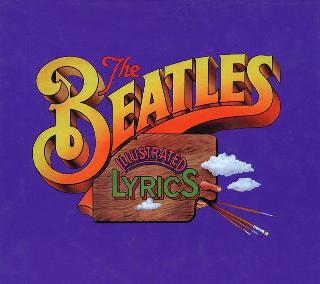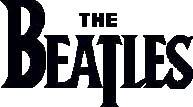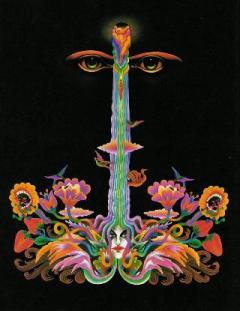Index
Home
Vorige
Love Me Do
Composer(s) : Lennon and McCartney
Year : 1962
Chords/Tabs: Love Me Do
Notes on "Love Me Do" (LMD)
To those who would argue that the early original songs of The Beatles are
just the same old stuff of which the Top 40 was made in the early 60s,
I draw your attention to this first official release of theirs; in fact,
it was exactly 29 years ago **today (I couldn't help notice that in 1962,
the 5th of October fell out on a Friday just as it does this year -- such
slavish synchrony!)
Granted, by itself, "Love Me Do" (LMD) is hardly the blockbuster of which
legendary careers are made. In contrast, those silly lists of "The 500 Most
Golden Oldies of All Time" promoted by certain radio stations are peppered
through with songs by groups whose claim to fame rests on the strength of
just one single; I expect general agreement from you all that LMD wouldn't
have done that for our Boys.
In fact, it's tempting at first blush to dismiss this one as too simple and
even unappealing. After all, we have what must be very nearly the skimpiest
Lennon/McCartney lyric ever, a gawky post-skiffle beat which threatens to
break into a polka in a couple of places, and a vocal duet that would appear
to be ripped off from the Everly Brothers. But just beneath the surface,
you find not only that certain bristling intensity in their voices, but
also a great deal of idiosyncratic originality in the compositional
details. One might even call it stylistically prophetic, especially in
regards to the phrasing, the vocal harmonies, and the modal melody.
The most intruiging aspect to this intuitive innovation of the early
Beatles is the question of how much of it was motivated by intentional
originality and how much a by-product of less-than-entirely-adept emulation
of their derivative influences. It's a quite serious question, the answer
to which, in spite of the seeming pejorative value judgment in my choice
of words, has nothing to do with the relative merit of the final product
itself; but I leave this question for now in the hands of the aestheticians.
Form
The form of this song is fairly typical:
Intro-> Verse -> Verse -> Bridge -> Verse ->
Bridge (solo) -> Verse-> Outro
Of interest is the positioning of the instrumental solo within a repeat of the
bridge rather than a verse section. It's because of this that there is only
one verse separating the two bridges; more typical of the period (e.g.,
"I Saw Her Standing There", or even "How Do You Do It") is to double up
on the verses in the middle, one of which, in that case, usually contains an
instrumental solo.
Harmony and Modality
I've pointed out in connection with several of John's middle-period songs
a penchant for harmonic frugality. This song with only three chords is
certainly a good early example; these are, in order of appearance are
the very basic ones of G, C, and D (I, IV, and V). As we'll see below,
in a deft move, the last of them, D, is held back until as late as the
bridge section.
LMD is ostensibly in the key of G Major though it contains a strong
Mixolydian modal inflection from the heavy use of both F-naturals in the tune
and in its reliance on the I-IV-I to establish a feeling of tonal center.
The non-modal Major V chord with an F# is used only in the bridge.
Another different sort of modal inflection in this song comes from the
liberal melodic use of bluesy bent-notes on b-flat over the G major chord
(with its b-naturals) in the accompaniment.
Intro
The intro is a balanced eight measure phrase and utilizes just the two chords
of G and C.
We're treated right at the outset to another soon-to-become signature
device of John's: the slow triplet rhythm, as it is found here in the
harmonica part, measure 3. Furthermore, we find in this harmonica solo
a very early example of the use of a hook-phrase used throughout an entire
song: the little descending motif of "f-e-d-g", with it's bluesy emphasis
on the seventh note of the scale (f) and the heavy use of flutter-tongueing
on the repeats, so suggestive of a sob or a cry. There's also the melodic
emphasis in this little riff on the note "d." as it appears superimposed
of the C chord, lending an overall jazzy C9 flavor the song.
As we soon see, this introductory hook is made ubiquitous in the song
by the incorporation of this intro within the final portion of the verse
section; or shall I say that the final part of the verse is set-up as the hook
by virtue of its having already appeared in the intro ? Just a matter of
semantics, I suppose.
Verse
The verse is an unusual thirteen measures long and is broken into the
sub-phrases which pretty much follow the scanning of the lyrics:
(3 times 2) Love, love me |do. You
know I love |you. I'll
always be |true So
(3 ple - - |-e - - - | -ase love me
plus 4) do. (return of the hook)
This sort of free meter in the scanning of the words (no iambic pentameter
for These Boys) is a noteworthy, not infrequent feature of their later songs,
especially those written by John. Its appearance here in such an early, and
otherwise not so ambitious, piece of work is astonishing.
The music continues on with just the same two chords from the intro. Note
how the break of the regular harmonic rhythm in measures 7 - 9 (on the
elongation of the word "please") enhances the impact of the irregular phrasing:
------ 3X ----- ----- 2X -----
|G |C ||C |- |- ||G |C |
G: I IV
The vocal harmony of this verse contains two specific seminal details which
would soon become telltale characteristics of "that Beatles sound"; one being
the use of open fifths instead of the more typical thirds or sixths, as in the
phrase "Love, love me do":
G
F
/
Paul: D D
D
/ C
John: G G
Note in the above example the special coloration, a melding of the two voices,
that arises from this sort of harmony. I'm fairly certain that it's
John on the bottom (though there's that famous interview clip with Paul
discussing the infamous acetate of "That'll Be the Day" in which he sings
the bottom part of this same fragment), though with Paul in a busking partial
falsetto on the top they're hard to distinguish from each other.
The other vocal detail is the sustaining of the same note in the upper part
against the scale-wise movement in the lower, as on the drawing out of the
word "please"; Paul's bending of the note so reminiscent of the harmonica
part:
Paul: G G G G
John: E D C E
One final point of interest here is in the careful working out of the
arrangement no matter how spare and simple it is. Note the unity amidst
varation that is achieved by following the harmonica solo of the intro
with a verse that first features a vocal duet and then concludes with
solo voice and the opening harmonica hook figure as backing.
And a detail within a detail: note how at the end of the verse when Paul
sings "love me do" solo, he's actually jumping the octave down from his
earlier part to the range where John was singing in the duet. According
to the interview with Paul in Lewisohn's preface, this was an artifact
of a last minute change in the studio to the arrangement; John was
supposed to sing it but it was impossible for him to get the harp in his
mouth quickly enough to also play the hook on time. Regardless of
the motivation, it's a nice serendiptitious touch.
Bridge
The third of the three chords used in this song finally makes its appearance
in the bridge section as part of the bluesy V-IV-I progression. It's all
rather dramatic in that, not only haven't we seen this V chord ('D.') yet, but
we haven't seen the pitch f# at all in the melody either; the verse staying
exlusively with those bluesy/modal f naturals. Of course, just to keep the
game interesting, the vocal melody in this bridge alternates continually
between the f# and f natural.
The first appearance of the bridge is eight measures long, and features the
only new words to be found in the song outside of the first verse. In
contrast to the verse, the phrasing of 4 + 4 is quite square, almost
too much so; at a distance of almost thirty years, I still find the
"bim BOM" rhythm on beats 2&3 of the eighth measure disconcertingly
teetering toward the lame:
-------------- 2X --------------
|D |- |C |G |
G: V IV I
The arrangement of this bridge is just as careful as that of the verse. Here
we have Paul singing solo while doubled by the harmonic alternating with
Paul and John singing in octaves. Note how, just as in the verse, Paul
makes another octave jump (upward this time) between his solo and duet
parts; just coincidence or true choreography ?
The second appearance of the bridge is an instrumental section of twelve
measures, the first eight of which are an adaptation of the previous bridge
with John playing a harmonica part in place of Paul's vocal.
Tacked onto this first phrase are four additional measures of harmonica
riffing over mostly just the G chord with an oom-pah bassline. In a manner
analogous to the ending of the first bridge, this four measure extension
concludes with another (dare I say) even more lame "Booomp" on the
third beat of the last measure; the solo note of D in the bass, punctuated
by a crash of the cymbal here serves in place of the V chord which begs for
the next verse.
Outro
The outro, in typical fashion provides a final reinforcement of the hook
phrase, with its repetition of the intro/end-of-verse section ad infinitum
into the fade-out.
An Overflow of Comparisons
We've come to the end of the song but not yet the end of this article.
I've got three sorts of brief comparative analyses up my sleeve for a
grande finale.
- LMD versus "How Do You Do It":
Just how does our current offering stack up against the Mitch Murray cover
that George Martin would've had them perform for their first single instead ?
Some interesting contrasts:
Both songs are in the same key of G and have almost identical
forms.
HDYDI uses "more" chords though nothing more exotic than the so-called
Brill Building selection; in addition to I-IV-V, there's vi, ii, and
and V-of-V. Compared to the raunchy modality of LMD, it's quite
diatonically Major sounding.
HDYDI does have a catchy touch of syncopation in its hook phrase,
but note how the phrasing is unrelievedly four-square throughout.
HDYDI positions its instrumental solo in a more traditional verse
section, and furthermore features solo guitar in place of harmonica.
You have some of the same sorts of duet/solo alternation in the
arrangement of both songs, though HDYDI features straight-line
parallel thirds.
Though less countrified than LMD, HDYDI is still closer to pop than
hard rock or blues.
Point-for-point, HDYDI clearly wins out as a less risky, more "conservative"
choice in terms which may explain both the lackluster albeit well-mannered
performance given it by the Boys as well as their ultimate rejection of
it by them. Besides, they hadn't written this one anyway; "aaaaah, give
it to Gerry."
- LMD versus the other L/M originals on the "Please Please Me Album":
Again, there are some interesting point-for-point contrasts. No surprise,
but some of the same signature devices of the nascent Beatles sound that we
found in LMD are also found in these other songs:
tight vocal duets with rich, unusual harmony in "I Saw Her Standing
There" (ISHST), "Please Please Me" (PPM), "There's A Place" (TAP) and "Misery"
uneven phrasing in "Do You Want to Know a Secret" (DYWTKAS), "P.S.
I Love You" (PSILY), and "Ask Me Why" (AMW)
slow triplets in AMW, and TAP
the harmonica again in PPM
Similarly no suprise, but these other songs have several telltale Beatles
signatures *not* to be found in LMD:
unusual chord choices in ISHST, PPM, PSILY, DYWTKAS, and AMW
strong rock flavor (including some fancy drum fills) in ISHST and PPM
backing vocals in PPM and DYWTKAS; three-part vocal harmony (I think)
in PSILY and AMW
slow, vocal intros in DYWTKAS and Misery
LMD, this time quite surprisingly, is unique overall, though, in the modal
inflection of its harmony. By the way, you might note how, in spite of their
well known R&B background both as Quarrymen and as Beatles at the Beeb, this
early set of eight originals overall is rather more pop-than-rock oriented,
in spite of the promise of, say, ISHST and PPM.
- the two versions of LMD compared:
Alot has been made of the fact that the official version released on the
PPM album contains a studio drummer (one Andy White) with the unfortunate
Ringo relegated to the lowly position of hitting the tambourine on the
offbeats.
I'd venture to say that as a commercial recording, the Andy White version
is the one performed with greater polish and confidence, and recorded with
better presence and clarity. Yet, for a unique early snapshot of the
Boys at work, the Ringo-drumming version (thankfully now generally available
on Past Masters, I) is definitely the one to be preferred because of power
with which it speaks to both your ears and heart.
With your ears, you can more easily hear the handclaps in the bridge of this
version, though without the tambourine, the overall texture sounds a tad thin.
More importantly, from the quiver in his voice, you can tell just how nervous
Paul is at this first "for real" recording session; the dotted notes in
his bass line sounding tentative and uncertain; the same for Ringo's drumming.
But best and most precious of all is what your heart responds to in this
version of the song, if only you'll open it widely enough. There's a lot of
"self" invested in those long, drawn-out phrases; you can keenly feel them
putting their "all" on the line. And if you've ever been so lucky in life,
it ought to resonate in you with some past experience of your own.
Let's say, a situation in which your words weren't all you wanted to say,
but you were brave enough anyway to commit it to print and give it to the
world ? Where you knew, in your heart, that someday all your hopes and
wishes would come true, even if everyone told you "a guitar's all right,
but you'll never earn a living by it"--- or words to that effect ? Where
you had to prove it to yourself, somehow, some way, somewhere that you
could make the future really *happen* for yourself?
That's what LMD meant to our own sweet Boys. It may not have been the best
song they ever wrote, but it was the Prime Step for them; it was their first
shot at immortality. And such a humble offering...but what a seed of passion
contained therein, don't you think ?
Regards,
Alan (awp@bitstream.com *OR* uunet!huxley!awp)
---
"They tried to fob you off on this musical charlatan,
but *I* gave him the test." **100590#21
--- ** posted two days early since
** I'll be briefly away from
** the net on 10/5.
Copyright (c) 1990 by Alan W. Pollack
All Rights Reserved
This article may be reproduced, retransmitted, redistributed and
otherwise propagated at will, provided that this notice remains
intact and in place.
Ook op Please Please Me:
Ook op Past Masters, Vols. 1:
Ook op Anthology 1:
Ook op 1962-1966:
Ook op Live At The BBC:
Ook op 1:
(c) 2024 Serge Girard


 (c) Alan Aldrigde, The Beatles Illustrated Lyrics
(c) Alan Aldrigde, The Beatles Illustrated Lyrics